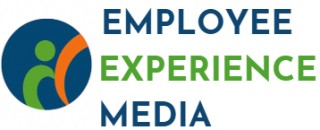
The Role of Leadership in Employee Experience
The Impact of Effective Leadership on Employee Experience
Leadership plays a vital role in shaping the employee experience within any organization. It's not just about managing tasks and delegating work; it involves inspiring teams, fostering a positive work environment, and nurturing growth. Leaders with a keen understanding of their personality traits and leadership potential can significantly enhance team performance, job satisfaction, and overall success.
Well-equipped leaders can leverage their strengths effectively, understand their values preferences, and steer clear of potential derailers. This is where leadership assessments, like the Hogan Leadership Assessment, come into play. These assessments offer a comprehensive inventory of personality traits, values, and possible areas for development.
By cultivating an atmosphere that promotes development and performance, organizations can see tangible improvements in employee engagement and experience. For HR professionals, integrating a structured leadership development survey can be pivotal. To navigate challenges in the HR training process, certain insights can be beneficial. For more details, you might explore resources that delve into addressing obstacles in HR training.
Ultimately, when personality tests such as Hogan assessments are used judiciously, leaders can better understand their motives values and preferences inventory. This understanding helps in aligning these with organizational goals, paving the way to shared triumphs.
What is the Hogan Leadership Assessment?
Exploring the Hogan Leadership Assessment
The Hogan Leadership Assessment is a comprehensive tool designed to evaluate leadership potential and personality traits. This assessment is widely recognized for its ability to provide insights into the personality characteristics that influence leadership effectiveness. By understanding these traits, organizations can better align their leadership development strategies with their overall employee experience goals.
Components of the Hogan Assessment
The Hogan Leadership Assessment comprises several key components:
- Hogan Personality Inventory (HPI): This measures normal personality traits that influence how individuals approach work and interact with others.
- Hogan Development Survey (HDS): This identifies potential derailers—traits that can impede performance under stress or pressure.
- Motives, Values, Preferences Inventory (MVPI): This assesses the core values and preferences that drive an individual’s behavior and decision-making.
How the Assessment Works
Participants undergo a series of personality tests that evaluate their strengths and potential areas for development. The results are compiled into a detailed report that highlights key personality traits and leadership potential. This report helps organizations identify leaders who align with their values and culture, ultimately enhancing the employee experience.
Why It Matters
Understanding the psychological impact of mentorship dynamics is crucial when considering leadership assessments. The Hogan Assessment helps organizations learn more about their leaders' personality traits and how these can affect team dynamics and performance. By leveraging this information, companies can foster a more supportive and effective leadership environment.
Benefits of Using Hogan Leadership Assessment
Advantages of Incorporating the Hogan Leadership Assessment
The Hogan Leadership Assessment is a comprehensive tool designed to enhance workplace dynamics and elevate employee experience. By understanding the various aspects it covers, one can observe an improvement in several areas related to leadership and organizational growth.- Uncovering Leadership Potential: The assessment evaluates candidates by analyzing their leadership potential, focusing on traits that foster success and potential derailers. This aids in identifying individuals who possess the inherent qualities to lead effectively.
- Fostering Self-Awareness: Hogan assessments help leaders gain insights into their own personality traits and values preferences. This self-awareness is critical for personal development and enhances their ability to relate to team members.
- Encouraging Leadership Development: With reports reflecting on strengths and weaknesses, the assessment helps organizations create targeted development programs. This can align individual motives values with the organization's goals, fostering a productive workplace.
- Enhancing Organizational Performance: Insights gained from the personalities of leaders help in shaping strategies that support team performance and stability within the workforce. This aligns with overarching employee experience strategies by fostering a cohesive work environment.
- Improving Recruitment and Retention: By understanding personality inventory and leadership traits, organizations can make informed decisions about hiring and promotions, which in turn contributes to better employee satisfaction and retention rates.
Implementing Hogan Leadership Assessment in Your Organization
Implementing Leadership Assessments Effectively
To ensure successful implementation of the Hogan Leadership Assessment in your organization, a structured approach is essential. This comprehensive strategy not only helps in identifying leadership potential but also aids in creating robust leadership development plans. Here's how to make the most of these assessments:- Understand the Assessment Tools: Familiarize yourself with the Hogan personality, HPI HDS HDS MVPI, and development survey tools. These assessments provide reports on personality traits, values, and potential derailers that can influence leadership performance. Getting to know these inventories and tests can enhance your understanding of their outcomes and their relevance to improving employee experience.
- Integration into Existing Processes: To maximize its impact, integrate the Hogan assessments into your existing human resources processes. This could include leadership development programs, performance evaluations, and succession planning. By aligning these assessments with organizational goals, they can enhance employee experience initiatives.
- Training and Development: Utilize the insights from the assessment reports for crafting targeted leadership training sessions. Focus on honing the personality traits and preferences inventory that align with your organization's values. This not only improves leadership traits but also helps in identifying and minimizing potential derailers.
- Feedback and Continuous Learning: Foster a feedback-rich environment where assessed leaders receive constructive feedback based on their assessment results. Encouraging an open culture where leaders can learn from performance insights promotes continuous development and helps in nurturing their leadership strengths and potential.
- Regular Review and Adjustments: Periodically revisit your assessment strategy to ensure it remains aligned with organizational changes and objectives. This helps in maintaining the relevance of leadership assessments and continuously contributing to employee success.
Case Studies: Success Stories with Hogan Leadership Assessment
Real-Life Examples of Hogan Leadership Assessment Successes
The implementation of Hogan Leadership Assessments can be transformative for organizations striving for leadership development. Many businesses have successfully leveraged these assessments to not only identify leadership potential but also to enhance employee experience. Let's delve into a few illustrative cases that highlight the tangible benefits achieved through Hogan Leadership Assessment.- Improved Leadership Development: One organization used the results from Hogan personality inventory and assessment to tailor their leadership development programs. By focusing on specific traits and strengths identified, they could create more personalized development plans. Leaders found the insights from their Hogan reports instrumental in understanding their personality and leadership traits, particularly how these could help or hinder their success.
- Boosting Team Performance: Implementing the Hogan Development Survey (HDS) enabled another company to pinpoint potential derailers in their leadership team. By addressing these potential pitfalls early, the organization was able to enhance team performance significantly. Leaders became more aware of their behaviors and were better equipped to manage their development journey, positively influencing the corporate culture.
- Effective Leadership Assessments: A company struggling with high turnover rates turned to Hogan personality assessments to shed light on underlying issues affecting employee satisfaction. By assessing values, motives, and preferences inventory, and understanding leaders' impact on the employee experience, the organization developed strategies to align leadership styles with employee expectations. The result was improved retention and a more engaged workforce.
- Tailored Leadership Training: Some organizations found success by incorporating Hogan assessments into their leadership training curriculum. The insights from these assessments helped tailor training content to address specific leadership traits and potential. As a result, leaders could leverage their strengths effectively while working on areas that required improvement, fostering a more well-rounded leadership approach.
Challenges and Considerations
Addressing the Complexities of Implementation
While the Hogan Leadership Assessment offers significant advantages in identifying leadership potential and enhancing employee experience, organizations may face several challenges during its implementation. Understanding these complexities can help in navigating the process more effectively.
Interpreting the Results
One of the primary challenges is accurately interpreting the results of the Hogan assessments. These assessments, including the Hogan Personality Inventory (HPI), Hogan Development Survey (HDS), and Motives, Values, Preferences Inventory (MVPI), provide a wealth of data on personality traits and leadership potential. However, without proper training, it can be difficult to translate these insights into actionable development plans. Organizations should invest in training HR professionals or hiring experts who can effectively interpret the reports and align them with organizational goals.
Ensuring Buy-In from Leadership
Another challenge is securing buy-in from current leaders. Some may be skeptical about the value of personality assessments or fear that the results could impact their standing within the company. It's crucial to communicate the benefits of these assessments in fostering leadership development and improving overall performance. Highlighting success stories from other organizations can also help in gaining support from leadership.
Balancing Individual and Organizational Needs
Implementing the Hogan Leadership Assessment requires balancing individual development needs with organizational objectives. While the assessments can identify personal strengths and potential derailers, aligning these insights with the company's strategic goals can be complex. Organizations must ensure that the development plans derived from the assessments support both personal growth and organizational success.
Maintaining Confidentiality and Trust
Maintaining confidentiality is another critical consideration. Employees must trust that their assessment results will be used constructively and not as a tool for punitive measures. Establishing clear policies on how the data will be used and ensuring transparency in the process can help build trust and encourage participation.
Continuous Development and Feedback
Finally, the Hogan assessments should not be a one-time event but part of an ongoing leadership development strategy. Regular feedback and continuous development opportunities are essential to fully leverage the potential of these assessments. Organizations should create a culture of continuous learning where leaders are encouraged to develop their strengths and address their weaknesses over time.













